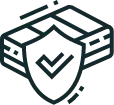
Welcome To Celestial Digital Services
At Celestial Digital Services, we are dedicated to providing exceptional services in the Internet Marketing industry.

Why Choose Us?
With years of experience in the Internet Marketing industry, we have built a reputation for quality, reliability, and customer satisfaction.

Expertise You Can Trust
Our team of professionals bring a wealth of knowledge and experience, ensuring you get the best results every time.

Tailored Solutions
We understand that every client is unique, which is why we take a personalized approach to meet your specific needs.

Commitment to Excellence
We are passionate about delivering top-notch service and products that consistently exceed all of your expectations.

How It Works
We deliver maximum value and help you stay ahead in your industry. We provide comprehensive solutions tailored to your business.
Consultation: We’ll start with a conversation to understand your goals and challenges.
Custom Plan: Based on your needs, we’ll develop a personalized strategy or solution.
Implementation: Our team will work with you every step of the way to ensure success.

Our Service Offerings
Interested in taking next steps and working with us?
Here is a description of some of our service offerings
Internet Marketing: Comprehensive solutions covering SEO, social media marketing, and email marketing tailored for different levels of expertise (beginner to advanced).
AI Tools: Innovative platforms that facilitate content creation, image editing, and video generation.
Local SEO Services: Enhancing visibility via local search optimizations and management of Google Business Profiles.
Speed Optimization: An all-in-one plugin designed for WordPress users, developed to improve website speed and performance.
Analytics and Conversion Tools: Applications for tracking visitor behavior and improving conversion rates through heatmaps and funnel analytics.
Lead Generation: Unlock a steady stream of high-quality leads and accelerate business growth with our data-driven lead generation services, expertly crafted to increase conversions, boost sales, and deliver a measurable return on investment.

